11 Common Weeds With Pink Flowers (Types of Pink Garden Weeds)

This post follows our research editorial guidelines.

In the plant world, the term “weed” tends to get a bad reputation. However, did you know that there are types of flowering weeds you may actually want to add to your garden?
in fact, not all weeds are yellow like the common dandelion. Some are grown as ground covers while others consume the rolling hills of mountainsides with pink flumes of petals.
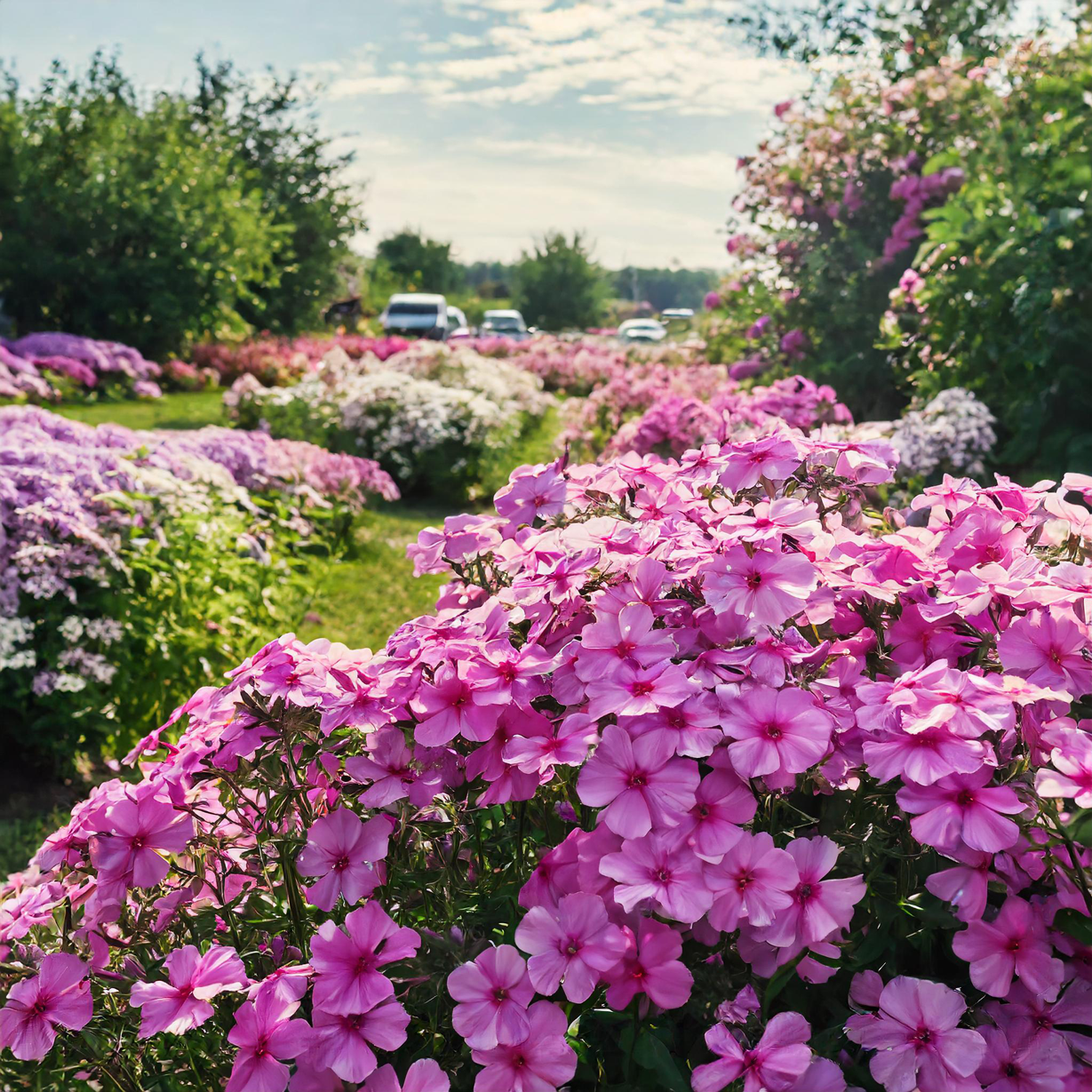
Let’s take a closer look at the different types of pink flowering weeds that can bring some beauty and benefit to your well-planned garden.
Whether your garden is full of trees with purple flowers or those with showy white flowers, this list may just convince you to keep these weed-like plants and let them flower.
Quickly Find Pink Weeds:
I think you might Also Like These:
1. Spreading Dogbane (Apocynum androsaemifolium)
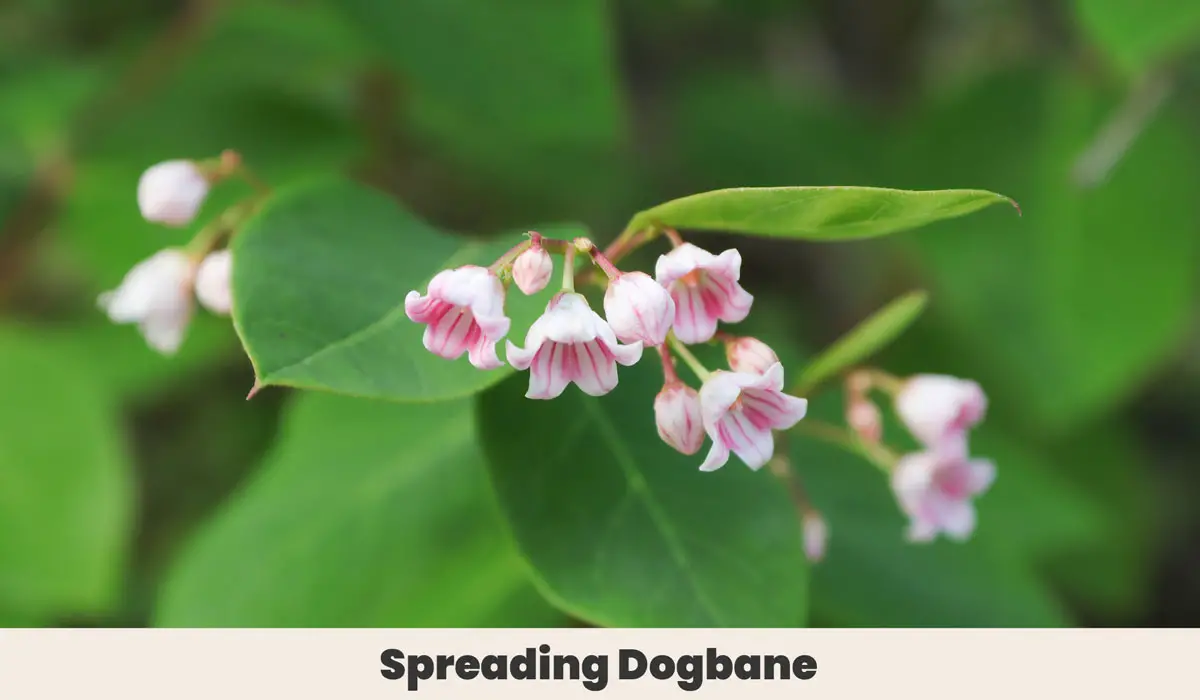
Though you’re likely to see this weed with pink flowers on the side of the road, it’s a perfect perennial to add to your garden. This perennial flowering plant has cute drooping bell-shaped flowers and comes in either white or pink.
These pale pink flowers prefer well-draining soil, but they will survive in clay soil, as well. For these pink weeds to grow up to 3 feet tall, it’s best to keep the in an area that gets at least six hours of both partial or full sun per day. If there are any changes to the environment, it may result in flower withering.
| Botanical Name: | Apocynum androsaemifolium |
| Growth Rate: | 3′ tall |
| Native Range: | North America |
| Hardiness Zones: | USDA 3-9 |
| Soil Needs: | Well draining soil, but can tolerate clay soil |
| Tolerate: | Partial to full sun, but can tolerate shade |
| Pests | Leaf beetles |
| Blooming Period | Between May-September |
| Pruning | Prune when the leaves are damaged or dead; pruning is optional any time of year |
2. Pink clover (Trifolium pratense)

Red clover is a perennial weed but don’t expect these to bloom every year. Unfortunately, small birds, mice, and other common rodents love to feast on red clover. As such, they will usually be too damaged to bloom annually. However, that doesn’t mean you shouldn’t expect these small flowers to never bloom again. Instead, expect these flowers and leaves to bloom every two to three years.
Furthermore, these gorgeous red flowers can actually be used for human consumption!
Many people use these flower heads for cooking and baking, including in soups, cookies, and juice. The Red Clover is able to survive in many different soil types and are a great addition to your lawn or garden.
| Botanical Name: | Trifolium pratense |
| Growth Rate: | 8-31″ tall |
| Native Range: | Europe and Northeastern United States |
| Hardiness Zones: | USDA 3-9 |
| Tolerate: | At least 6 hours of full sun, but it can tolerate some shade |
| Diseases: | White mold, stem rot, sclerotinia crown, northern anthracnose |
| Pests: | Clover root borers and meadow spittlebug |
| Blooming Period: | April-early summer |
3. Spear Thistle (Cirsium vulgare)
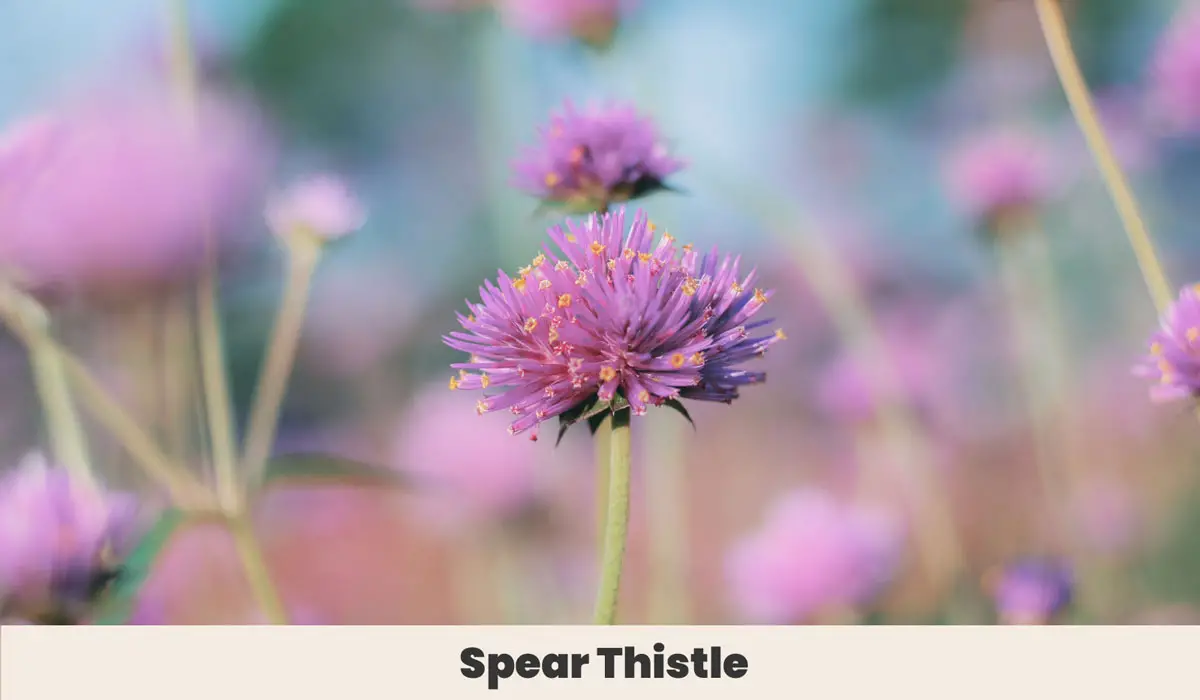
There are a lot of names for the Spear Thistle. Sometimes called Bird Thistle, Fuller’s Thistle, or Swamp Thistle, this weed develops light purple flowers that are pretty exotic looking.
You won’t have to do a lot to help them thrive. During the spring and early fall, you will usually only have to water them about once a week. During the summer, you may need to increase watering to two or three times a week, depending on how quickly the top layer of soil dries out. If you forget to water it, don’t worry; it’s able to withstand droughts.
Furthermore, it prefers soil that is rich with nitrogen. Avoid planting it in and growing it in sandy or clay soils, as this could affect the effectiveness of flowers that grow on this weed.
| Botanical Name: | Cirsium vulgare |
| Growth Rate: | up to 6′ tall |
| Native Range: | Asia, Northern Africa, Europe |
| Hardiness Zones: | USDA 2-10 |
| Tolerate: | Full and partial sun |
| Diseases: | Flower withering |
| Pests: | Lacebugs and aphids |
| Blooming Period: | March-April |
4. Henbits (Lamium amplexicaule)
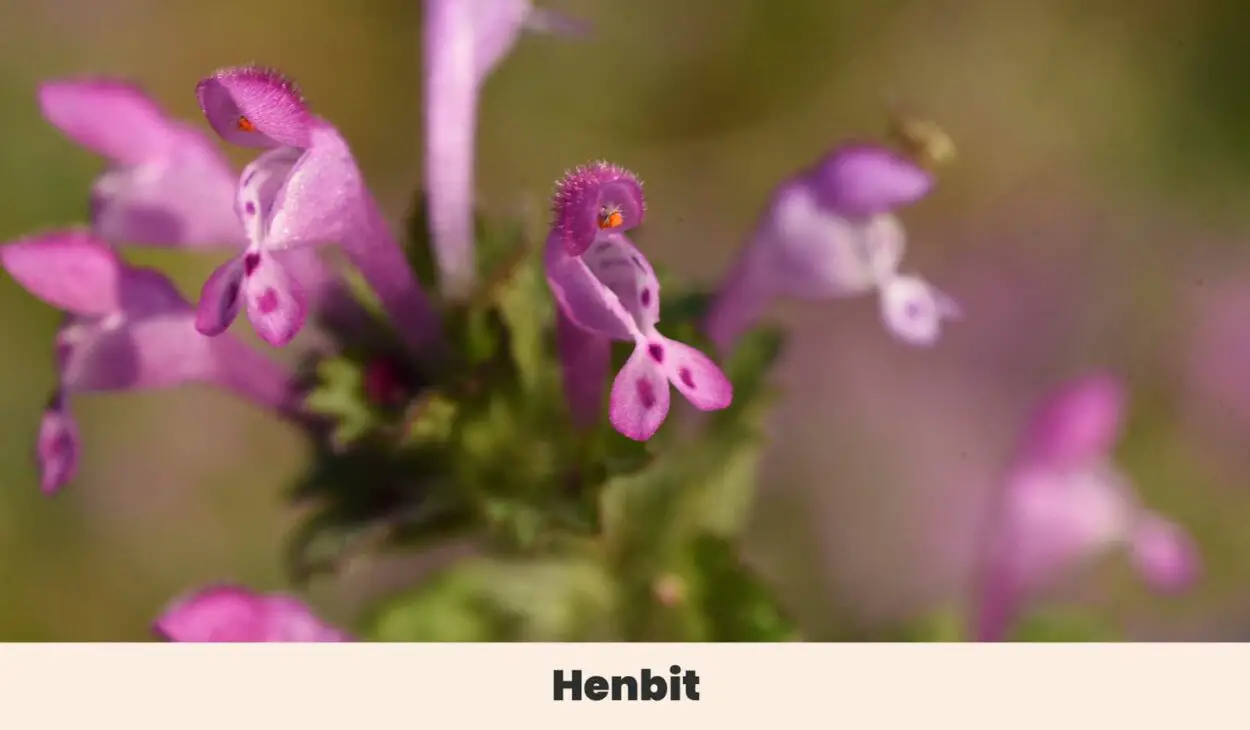
When Henbits aren’t in bloom, they look like your average weed. However, when in bloom, Henbits add pink or purple flowers to your garden. While you should commonly expect flowers in June, don’t be surprised if attractive white flowers also begin to bloom in the winter season.
Henbits are a pretty adaptable weed, meaning they can thrive in either full shade or full sun (however, it does best in full or partial shade). While you may want to prevent weeds from invading your garden, keeping Henbits in there can be beneficial to other plants because they attract hummingbirds, butterflies, and bees that help pollinate everything.
| Botanical Name: | Lamium amplexicaule |
| Growth Rate: | Up to 1′ tall |
| Native Range: | Europa, Northern Africa, and Asia |
| Hardiness Zones: | USDA 3-1 |
| Tolerate: | Full and partial sun or full shade |
| Diseases: | Powdery Mildew |
| Pests: | Thrips |
| Blooming Period: | Spring – early summer, mid-winter to late winter |
5. Herb Robert (Geranium robertianum)
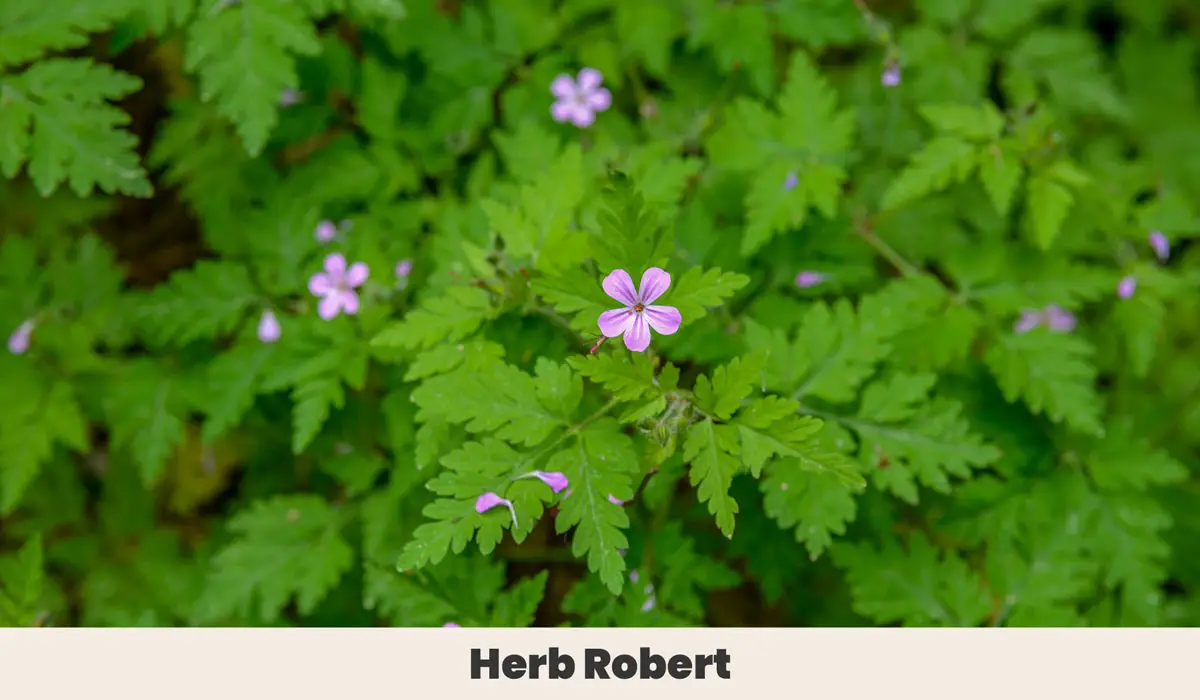
Though Herb Robert has the potential to become a weed, it also has proven successful for adding some vibrancy to your garden.
This annual weed is pretty easy to care for and only needs to be pruned when the leaves or stem is damaged or dead. Likewise, it has the ability to adapt to many different types of soil. However, because of its complex root system, it’s recommended that you loosen the soil first before planting it in the ground.
When in bloom, it produces pink flowers that have five petals on them. Flowers appear between late spring and early autumn.
| Botanical Name: | Late spring-early fall |
| Growth Rate: | 8-20″ |
| Native Range: | Central Asia, Europe |
| Hardiness Zones: | USDA 5-9 |
| Tolerate: | Partial sun and partial shade |
| Diseases: | Brown Spot |
| Pests: | Leaf beetles |
| Blooming Period: | Late spring – early fall |
6. Self Heal (Prunella vulgaris)

The Prunella Vulgaris, or Purple Flower as it’s commonly called, is considered to be a perennial broadleaf. This means that they die in the winter but re-emerge with new growth during the spring. The flowers on this plant are pink with purple undertones and can sometimes be considered purple flowering weeds.
When in bloom, the stem produces a single flower that’s usually a mix of green and purple. The flowers are small at only a centimeter long. Their shape is tubular, which adds some interesting shape to your garden and any other bright yellow flowers or dark pink plants already there.
Considered to be a low-maintenance plant, they are non-toxic and prefer to grow in either full or partial sun. Because of their bright purple hue, they will be the perfect contrast to any showy white flowers already in bloom.
| Botanical Name: | Prunella vulgaris |
| Growth Rate: | 1-2′ tall and 6-9″ wide |
| Native Range: | Asia, North America, Europe, and Africa |
| Hardiness Zones: | USDA 4-9 |
| Tolerate: | Full or partial sun |
| Diseases: | Fruit withering and underwatering |
| Pests: | Leaf beetles |
| Blooming Period: | June – October |
7. Field Pansy (Viola arvensis)

The Field Pansy is one of my favorite flowers that can be considered a weed. Expect blooms between April and June, don’t be surprised to see this pretty flower spring up during the fall season. In fact, the Field Pansy is a flower that does really well in cooler temperatures.
Furthermore, they are very versatile. While they prefer rich soil mixed with organic matter, they have been known to grow in gardens and the wilderness, adapting to all sorts of soil and sun conditions. After planting it, don’t be surprised to see how quickly it will spread across your garden or lawn. The Field Pansy is considered to be an invasive weed, so it tends to travel everywhere. But when you see its small white flowers, you won’t mind.
| Botanical Name: | Viola arvensis |
| Growth Rate: | up to 15″ tall |
| Native Range: | Asia, Europe, and Africa |
| Hardiness Zones: | Not applicable because they are grown annually in the United States |
| Tolerate: | Full sun with some partial shade during hot afternoons |
| Diseases: | Black Root Rot, various fungal leaf diseases |
| Pests: | Slugs, snails, and aphids |
| Blooming Period: | April-June, but may bloom in the fall depending on the weather |
8. Field Bindweed (Convolvulus arvensis)
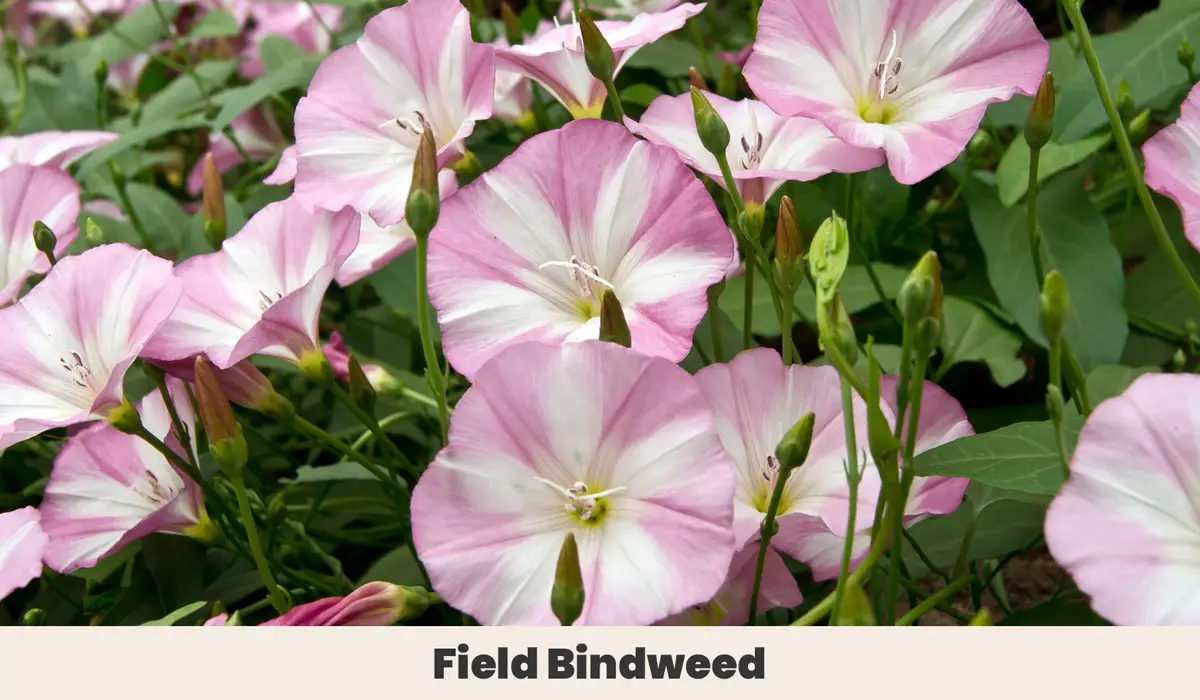
Field Bindweed has white and pink flowers that bloom between April and October. However, depending on the climate, their blooming period may extend past this until the first frost of the year. This plant’s seeds remain in the soil for a while – up to 50 years, making it very easy to spread elsewhere, especially when animals, wind, and water drainage make doing so possible.
It’s generally considered non-toxic, but it can damage your crops by passing along dormant viruses. If you are growing crops, especially tomatoes, beans, and potatoes, regular lawn care should involve removing Field Bindweed so it doesn’t cause unnecessary damage.
Despite this damage, Field Bindweed is commonly used for medicinal purposes. That being said, it’s best to leave these to the professionals, as eating them is not recommended.
| Botanical Name: | Convolvulus arvensis |
| Growth Rate: | Up to 6.5′ tall |
| Native Range: | Asia, Europe, and Northern Africa |
| Hardiness Zones: | USDA 4-8 |
| Tolerate: | Full sunlight and full shade |
| Diseases: | Not applicable |
| Pests: | Not applicable |
| Blooming Period: | April-October |
9. Fireweed (Chamaenerion angustifolium)

Fireweed develops such beautiful pinkish-purple flowers that it’s hard to believe they’re technically considered a weed. As one of the most common weeds with pink flowers, Fireweed actually tends to develop after forest fires.
This is a common weed found in both the United States and Canada. It prefers to be exposed to full sun and blooms during the summer. While it doesn’t need to be pruned, you can do so to maintain its aesthetic appearance by getting rid of dead or damaged flowers. If the flowers look like they’re wilting, get your pruning shears ready! Just keep in mind that you’ll want to avoid pruning after September 1st, as pruning triggers new plant growth and this plant can’t handle the cold weather and frost of the autumn and winter seasons.
| Botanical Name: | Chamaenerion angustifolium |
| Growth Rate: | 2-5′ tall |
| Native Range: | Canada and the United States |
| Hardiness Zones: | USDA 3-7 |
| Tolerate: | Full sun |
| Diseases: | Rust, Leaf Spot, Powdery Mildew |
| Fertilizer: | Apply a slow-release fertilizer in the spring |
| Pests: | Slugs and snails |
| Blooming Period: | Summer |
10. Valerian (Valeriana officinalis)
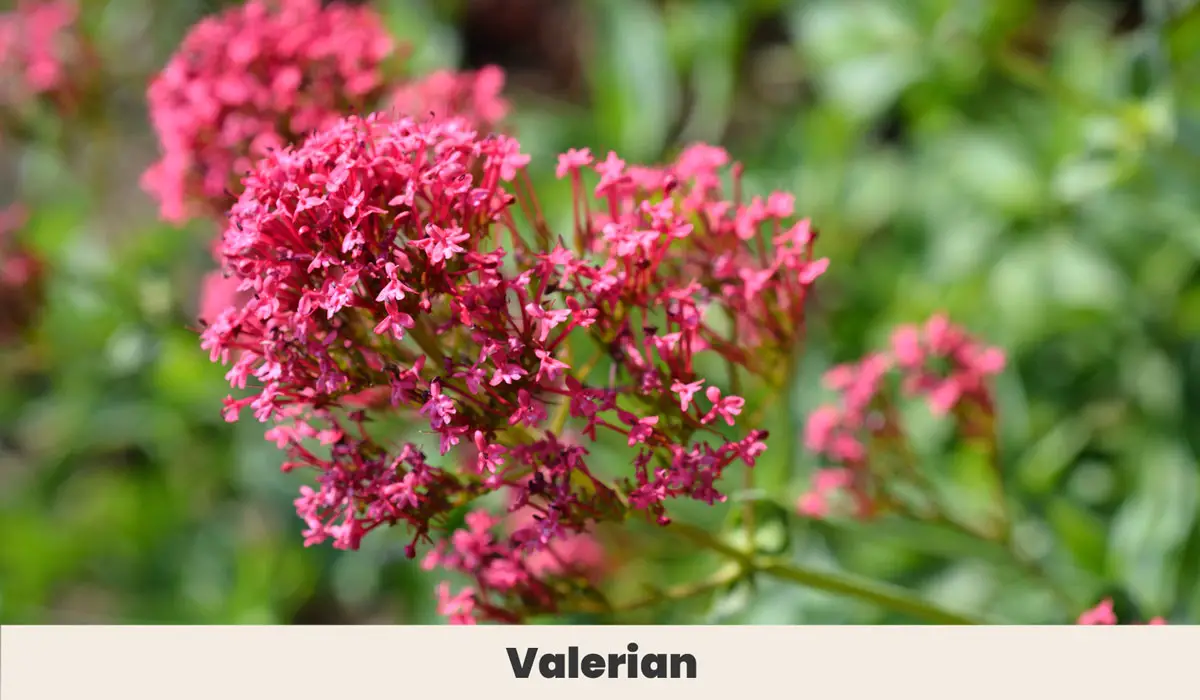
The Garden Valerian produces cute white and pink flowers. Considered extremely low-maintenance, this is also considered to be an invasive plant. In other words, it will keep spreading due to its ability to self-seed. If you prefer to keep your Garden Valerian contained to one area of your lawn and garden, then it’s recommended that you remove the flowers before they bloom.
However, if you don’t mind these pink or white flowers spreading, they will add a lot of beauty to your lawn. They can grow up to 5 feet tall. They are extremely adaptable to any type of soil, as long as it remains moist and is well-draining to prevent water logging and root rot.
| Botanical Name: | Valeriana officinalis |
| Growth Rate: | 3-5′ tall |
| Native Range: | Europe and Asia |
| Hardiness Zones: | USDA 3-9 |
| Tolerate: | Partial shade, full sun |
| Diseases: | Not applicable |
| Pests: | Not applicable |
| Blooming Period: | Early summer |
11. Wood Sorrel (Oxalis Violacea)
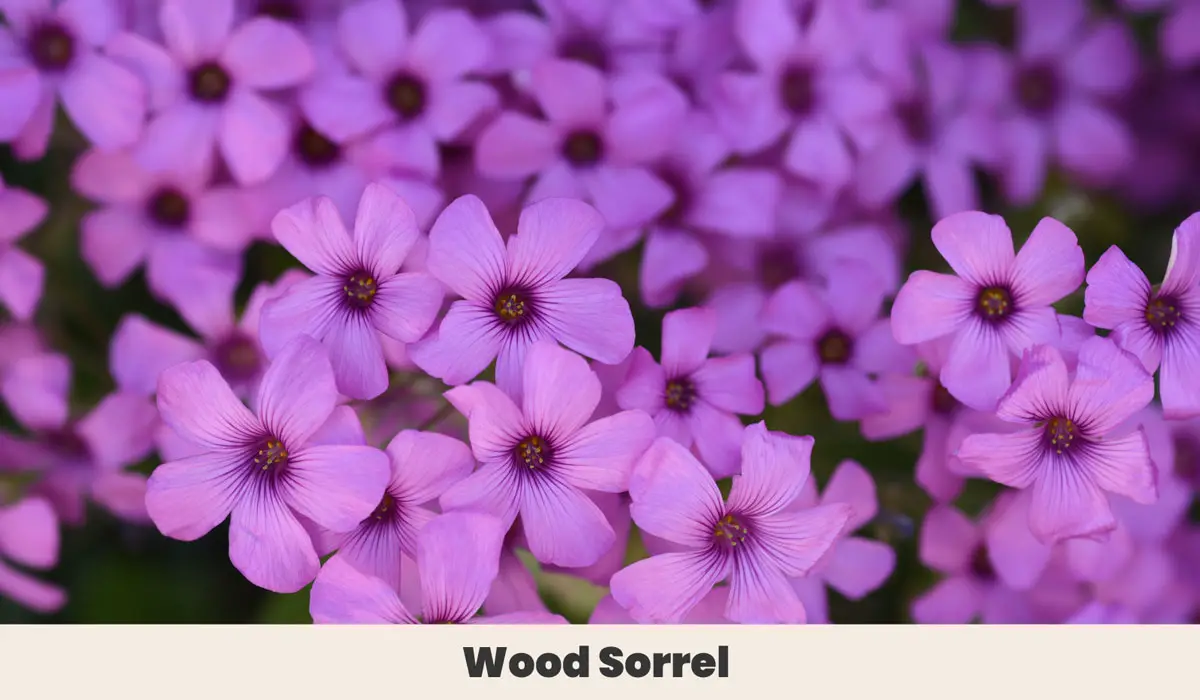
Oxalis Violacea, or as it’s more commonly known as Wood Sorrel, has a lot of different variants. As such, you may find this flower with pink, white, yellow, and purple blooms, or completely green. In fact, because of this plant’s sometimes clover-shaped leaves, it becomes very popular around St. Patrick’s Day.
Regardless of what your Wood Sorrel looks like, it’s relatively easy to take care of. It doesn’t require a ton of watering and as long as it’s in a rich, well-draining soil, you rarely have to add any fertilizer to make these weed flowers grow.
Flowers bloom from May to early summer and when they do, they will add a burst of color and unique shape to your flower beds. Just keep in mind that these plants are toxic to household pets, so make sure they never get around them.
| Botanical Name: | Oxalis Violacea |
| Growth Rate: | 6-10″ tall and wide |
| Native Range: | North America |
| Hardiness Zones: | USDA 5-9 |
| Tolerate: | Full or part sun or part shade; keep away from direct sun |
| Diseases: | Rust or Leaf Spot |
| Pests: | Aphids |
| Blooming Period: | Mid-spring to early summer |
Final Thoughts
Being able to identify the most common weeds is important, not only to keep your garden protected but to know the benefits of what’s growing in your lawn. unfortunately, weeds get a bad reputation, but they can add a lot of benefits to your garden, both in terms of pollination and adding color to an otherwise sea of green.
Whether your weeds have purple flower heads or trumpet-shaped flowers, all it takes is looking at these weeds with pictures to envision what life they’ll bring to your property.
I hope this guide was able to help you understand how weed grows and what kind of flowers you can expect to see taking off in your garden when you let weeds do their thing.
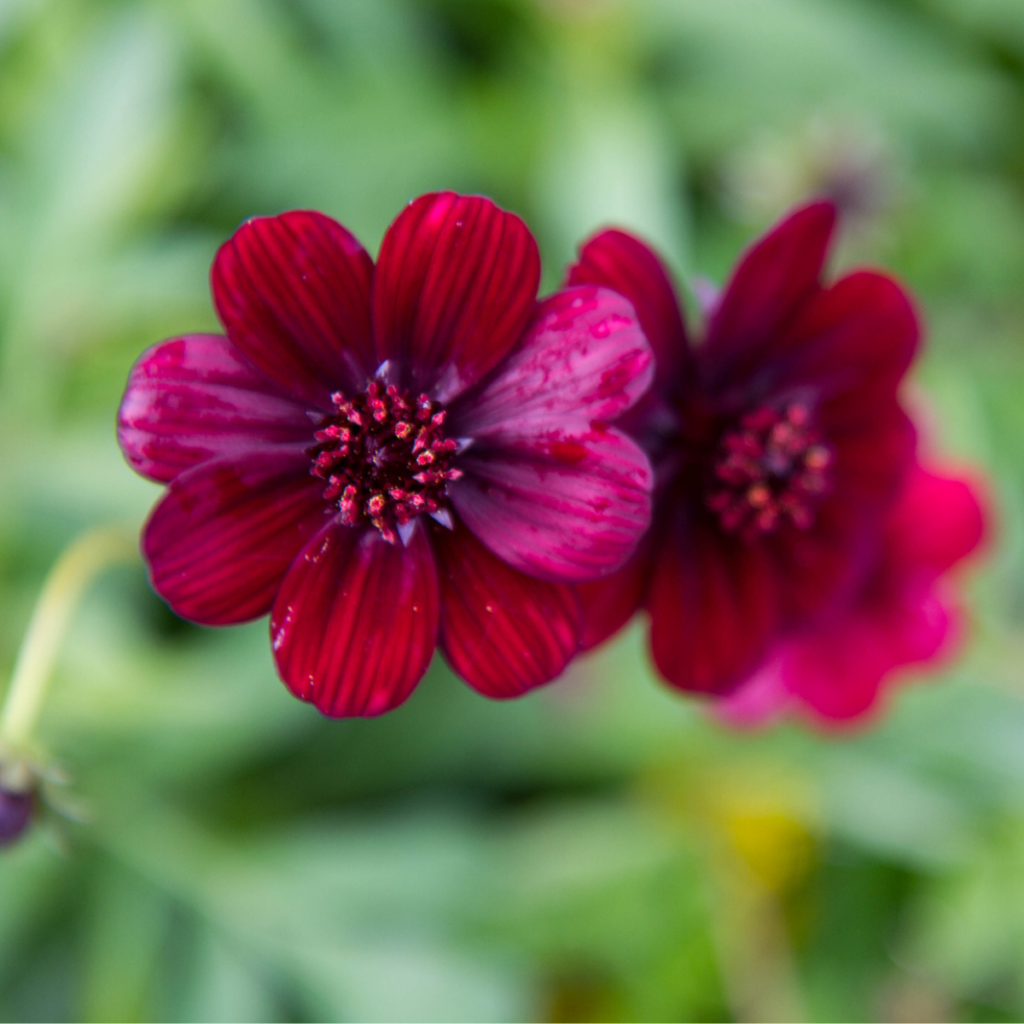

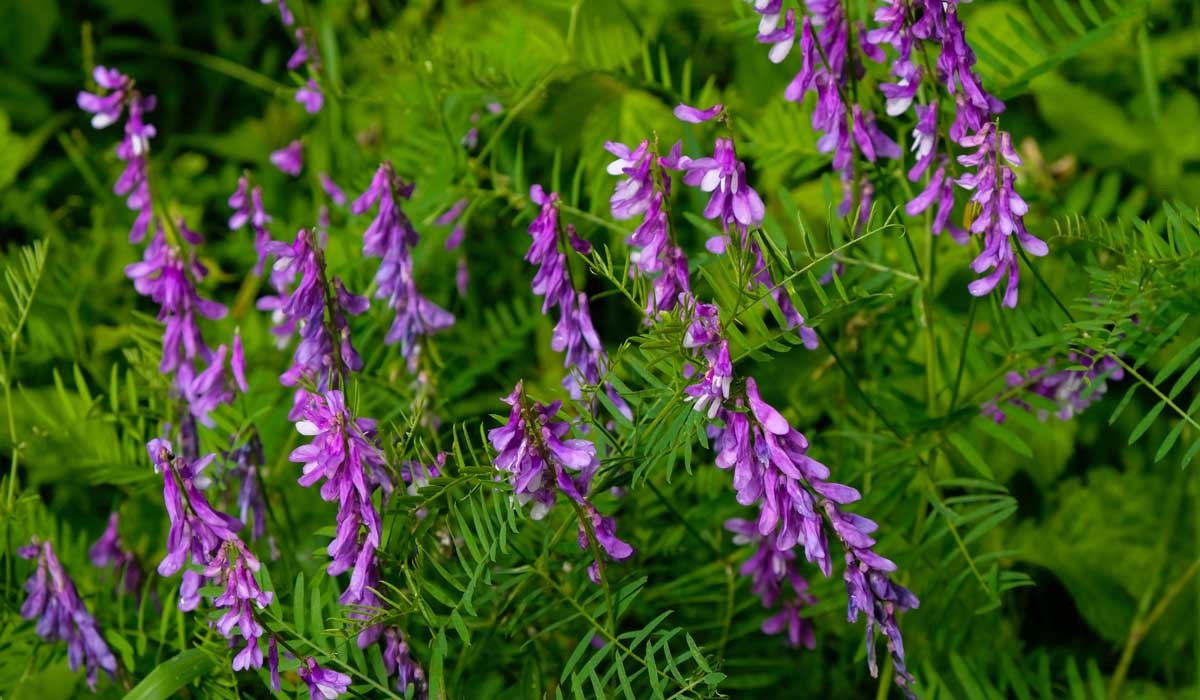
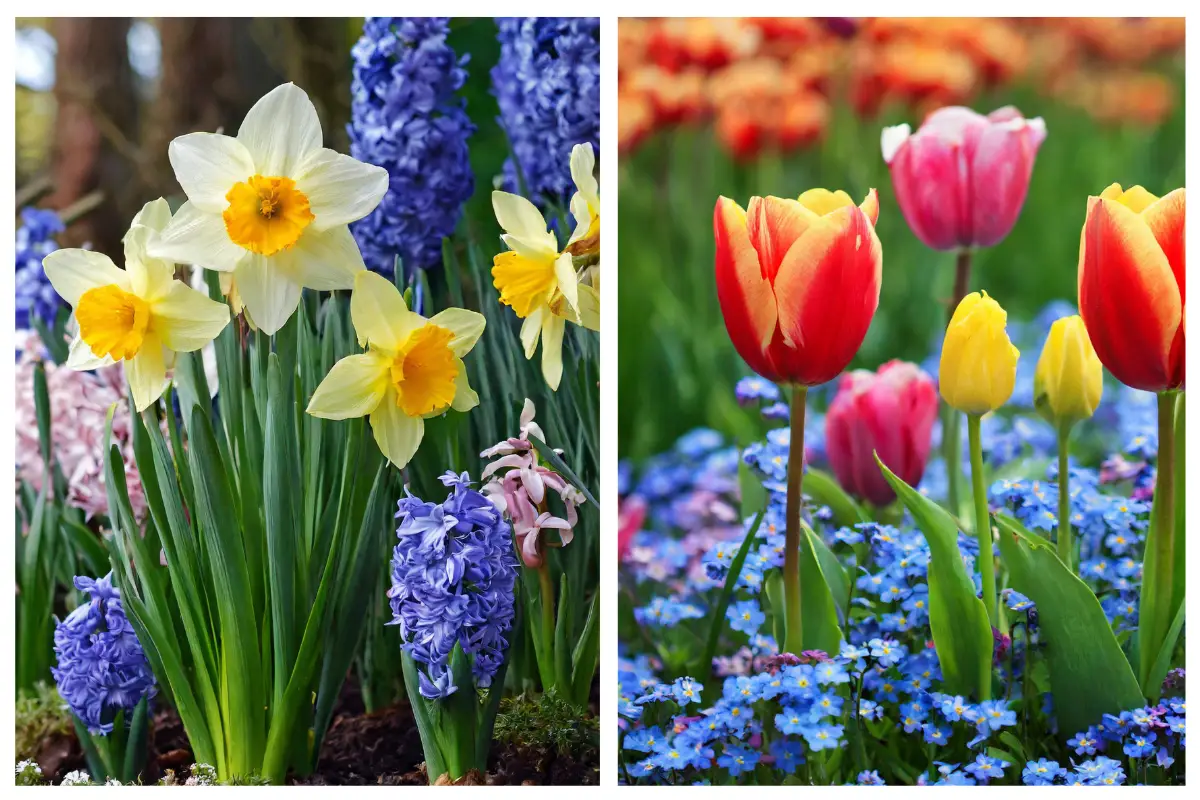

Hello I read your article on 11 common weeds with pink flowers. I was wondering where would I fund these plants? I.dont think my local garden center would have them as they are considered weeds.
You might be surprised Mindy! While these are technically considered weeds, that term is often used for plants that are native to certain areas and grow prolifically. Others plants like pink clover are best grown from seed. 🙂
Could you please confirm than the common pink flowering weed number 4 is Lamium Amplexicaule- henbit
thanks
Hi David! Thanks for spotting this mistake! I’ve corrected the image to show pink henbit. 🙂